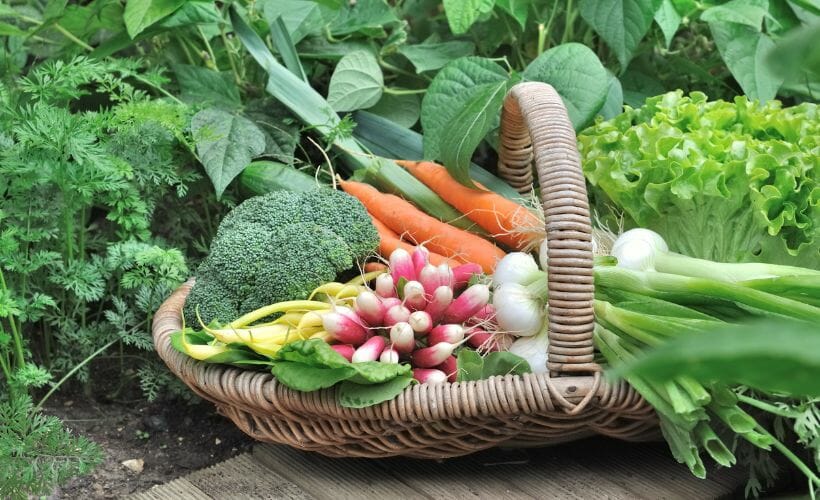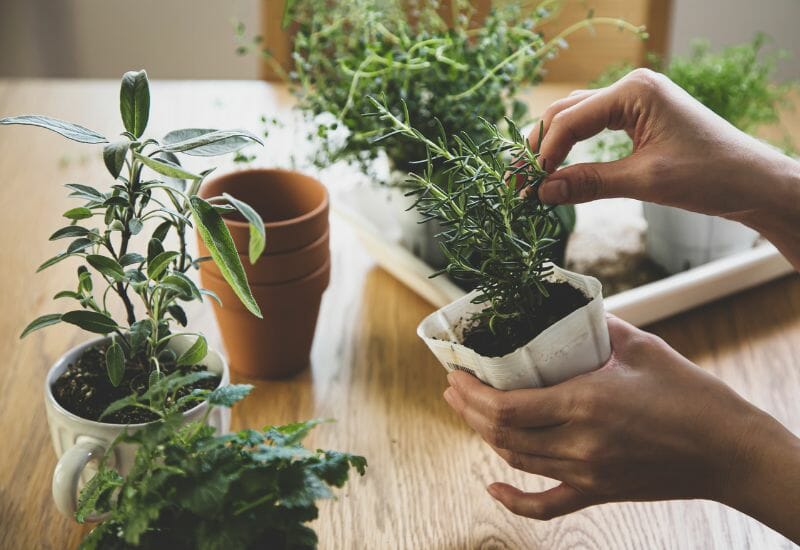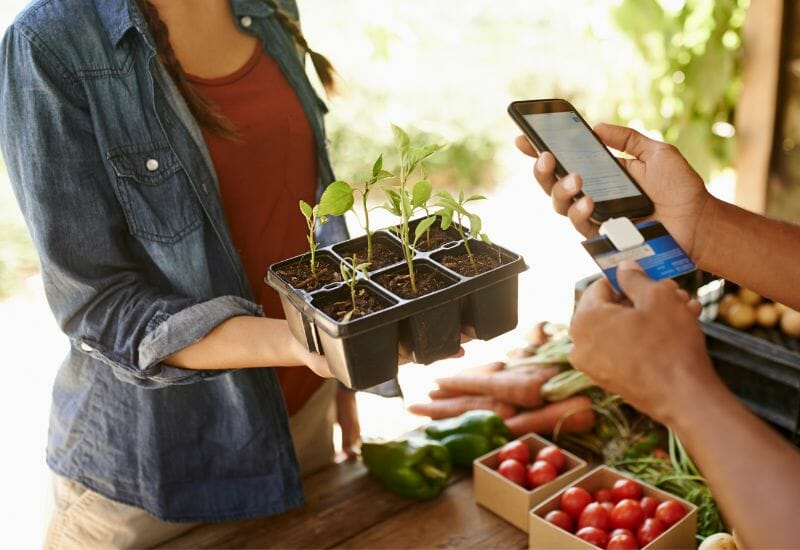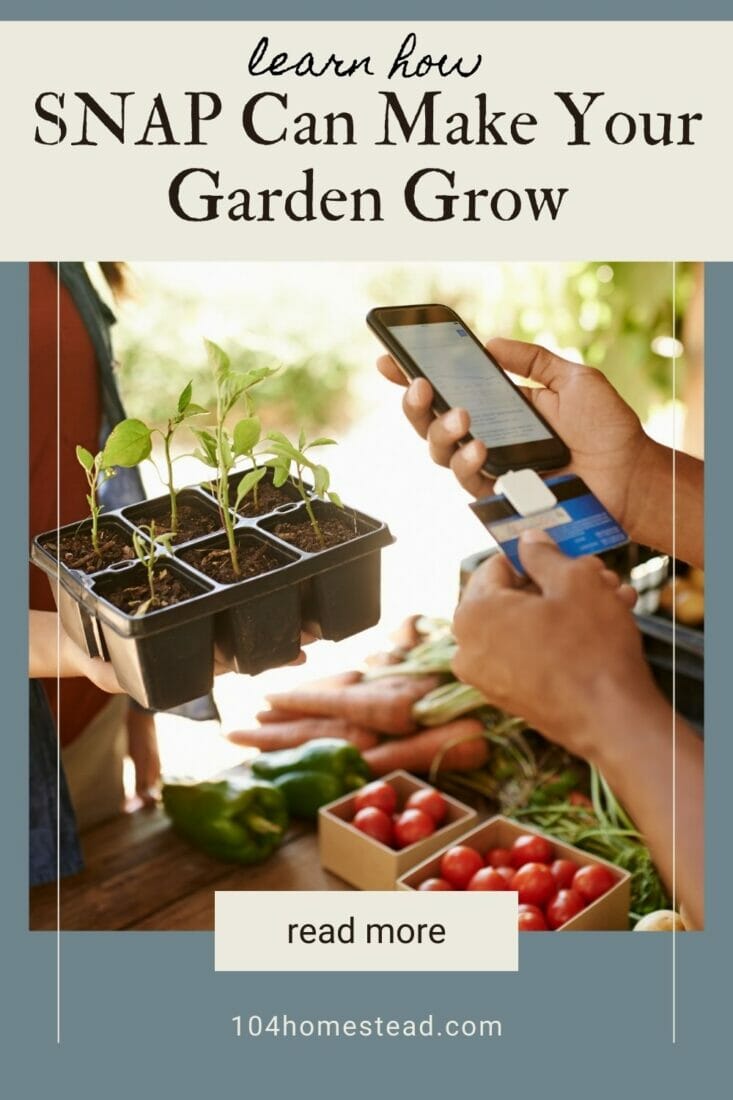An Unexpected Use for SNAP: Buy Seeds with Food Stamps
If you receive SNAP benefits and have a green thumb, you can make your dollars go further. Did you know you can buy seeds with food stamps?
Estimated reading time: 6 minutes

Do you want to use your food stamps to buy something more than just processed and unhealthy foods? You can purchase seeds! Food stamps can be used to buy seeds and plants. Now is the perfect time to start your home garden.
Growing your food at home can help you save money, and it’s good for your health. Starting your home garden is easy and can be a great way to use your SNAP benefits for something more worthwhile!
Unknown Snap Benefits: Buying Seeds & Plants
One of the greatest benefits of buying seeds and plants with food stamps is the ability to grow your fruits, vegetables, and herbs. This not only allows you to enjoy fresh produce straight from your garden, but it also has numerous health benefits. When you grow your vegetables and herbs, you have full control over what goes into your food. You can avoid harmful pesticides and chemicals often used in commercial farming, resulting in healthier and safer produce for you and your family.
Furthermore, gardening can be a stress-relieving activity and a great physical exercise. Working in your garden and being outside in nature has been proven to reduce stress levels and improve overall mental well-being. In addition, growing your food can also save you money in the long run. Instead of buying expensive produce from the store, you can grow your own at a fraction of the cost.
Buying seeds and plants with food stamps can have many benefits beyond just providing food. It can improve your health, reduce stress, and save money. So why not start your home garden today and reap the rewards of growing your vegetables and herbs?
How to Get Started with Your Own Home Garden
To get started with your home garden, there are a few things you need to consider. First, you’ll need to choose a location for your garden. This can be in your backyard, on a balcony, or inside your home using containers. Make sure the area you choose gets plenty of sunlight and has access to water. If your property isn’t conducive to traditional gardening, you may be able to plant in containers or get a space at a local community garden. You can even grow a variety of foods indoors!

Next, you’ll need to decide what you want to grow. Start small with a few herbs or vegetables that you enjoy eating. Some great beginner options include tomatoes, peas, beans, cucumbers, and spinach. Check out my list of the easiest foods to grow.
Once you’ve decided what to grow, it’s time to gather your supplies. You’ll need soil, pots or containers, seeds or plants, and gardening tools such as a trowel and watering can. Consider utilizing local resources, such as community gardens or gardening clubs, to find affordable supplies and get tips from experienced gardeners.
What is EBT eligible?
Eligible items include seeds, plants, vegetables, fruits, nuts, and herbs such as…
- Seeds for producing edible plants.
- Edible plant seedlings.
- Food-producing roots, bushes, and bulbs.
- Seeds and plants that are used to produce spices for use in cooking.
Gardening soil, fertilizer, peat moss, and other gardening supplies are NOT eligible items.
Where can I buy seeds with food stamps locally?
Shopping for seeds or plants at a store where you already use your EBT card is a good idea. Grocery stores are often SNAP retailers. However, stores that don’t usually sell food, like garden centers and home improvement stores, won’t accept EBT cards. This is because they don’t sell enough food to be part of the Supplemental Nutrition Assistance Program (SNAP), which allows EBT card use for plants and seeds.
Talk to a manager if a store clerk doesn’t accept your EBT card for seeds or plants. Show them the list of Eligible Food Items on the USDA website. This will help them understand that these items are allowed to be purchased by SNAP recipients.
Farmers’ Markets are a wonderful resource!
Many farmers’ markets now accept SNAP benefits. To find such a market, visit the United States Department of Agriculture (USDA) Farmers Market Search. If a market near you isn’t on the list, call the market organizers to find out if they’re equipped to accept payment from SNAP participants.

Where can I buy seeds with food stamps online?
Amazon offers many opportunities for low-income individuals to increase their food stamp benefits. With various options for starting a home garden, Amazon has everything you need to add fresh, home-grown produce to your plate. Not all food-producing seeds and plants sold on Amazon are eligible. Eligible items are marked with SNAP EBT eligible near the item’s price. You can see more information on their participation on their SNAP FAQs page.
Saving Money with a Home Garden
Growing your fruits and vegetables can save a lot of money on grocery bills. With increasing food prices, a home garden can be an excellent way to keep your grocery budget in check. This can be an absolute lifesaver when you’re already on a tight budget.
Improving Your Health and Well-Being
By growing your fruits and vegetables, not only are you saving money, but you’re also improving your health and well-being. Eating fresh produce from your garden means you’re consuming food that’s free from harmful pesticides and chemicals that can be found in store-bought produce. Plus, homegrown fruits and veggies are often higher in nutrients since they’re picked at the peak of ripeness.
Gardening is also a great form of exercise. Planting, weeding, and harvesting can all provide a low-impact workout that improves overall flexibility, strength, and cardiovascular health. Outside, the fresh air and sunshine can also improve your mood and reduce stress. It’s a great activity to get kids involved in as well. Not only does it get them outdoors, but it also teaches them about where their food comes from.
Furthermore, gardening can be a fun and rewarding hobby that brings fulfillment and accomplishment. It’s a great way to connect with nature and learn about the natural rhythms of the growing seasons.
Investing in a home garden not only saves you money on grocery bills, but it can also improve your physical and mental health. By incorporating more fresh produce into your diet and engaging in outdoor physical activity, you can take the first step towards a healthier and more sustainable lifestyle.
In conclusion, SNAP benefits can be used to buy seeds – a fact that often goes unnoticed. But the benefits of purchasing seeds with food stamps are enormous. Homegrown food not only saves money but also improves your health and well-being. So take advantage of this unique opportunity and start your home garden today. As the saying goes, “Let food be thy medicine and medicine be thy food.”


